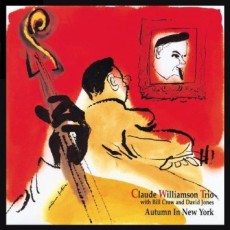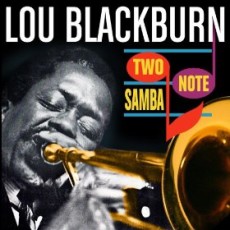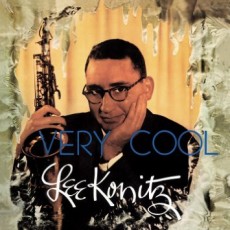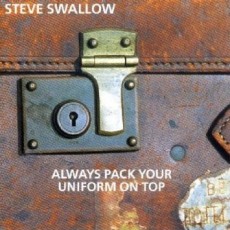
Daily Dose Of Jazz…
Claude Berkeley Williamson was born November 18, 1926 Brattleboro, Vermont. He studied piano at the New England Conservatory of Music before moving to jazz, influenced mainly by Teddy Wilson, then by Al Haig and Bud Powell.
Moving to California in 1947 he first worked with Teddy Edwards, then with Red Norvo in San Francisco followed by Charlie Barnet in 1949 and June Christy two years later. He would go on to work with Max Roach, Art Pepper, Chet Baker, Maynard Ferguson, Barney Kessel, Dizzy Reece, Ted Curson and others.
Williamson was a longtime member of the Lighthouse All-Stars, often substituting for Russ Freeman, and performing with Bud Shank, Stan Levey, Bob Cooper, Conte Candoli and Howard Rumsey. By 1956 he was the piano player in the Bud Shank Quartet and a little over a decade later he was the pianist for NBC on The Andy Williams Show and then for Sonny and Cher.
In 1978 he went back to the jazz world and released many albums, mainly for Japanese labels, often accompanied by Sam Jones and Roy Haynes. In 1995 he made a trio recording for Fresh Sound Records at the Jazz Bakery and at the age of 88, pianist Claude Williamson currently plays clubs in Los Angeles.
More Posts: piano

Daily Dose Of Jazz…
Lou Blackburn was born on November 12, 1922 in Rankin, Pennsylvania. Performing mainly in the swing genre, his adaptability lent his trombone to pursue several other genres including the West Coast jazz, soul jazz and mainstream mediums.
During the 1950s Lou played swing with Lionel Hampton and also with Charlie Ventura. In the early 1960s he began performing with Duke Ellington’s big band and with musicians like trumpeter Cat Anderson, Horace Tapscott, Melvin Moore, Red Callender and Bobby Bryant. He performed sideman duties on the album Mingus at Monterey with Charles Mingus. During this period he did some crossover work with The Beach Boys and The Turtles. He was also a part of the recording session for the film The Manchurian Candidate
Blackburn recorded as a leader in 1963, Jazz Frontier and Two Note Samba for Imperial Records and both have been reissued by Blue Note as a compilation The Complete Imperial Sessions. He also recorded Perception, Brass Bag, Jean-Bleu and Ode To Taras. As a sideman he worked with June Christy, Gil Fuller and The Three Sounds recording for Capitol, Pacific Jazz and Blue Note record labels. Trombonist Lou
His decision to live abroad moved him to Germany where he toured very successfully out of Germany and Switzerland with his ethno jazz band Mombasa that had strong African content and players. He also put together an ensemble called the Lou Blackburn International Quartet that had a more progressive feel. Trombonist Lou Blackburn passed away on June 7, 1990 in Berlin, Germany.
More Posts: trombone

Daily Dose Of Jazz…
Lee Konitz was born October 13, 1927 in Chicago, Illinois. At age 11, he received his first instrument, a clarinet, but later dropped the instrument in favor of the tenor saxophone. He eventually moved from tenor to alto. His greatest influences at the time were the swing big bands, in particular Benny Goodman, who prompted him to take up clarinet. However, on the saxophone he was improvising before ever learning to play any standards.[1]
Konitz began his professional career in 1945 with the Teddy Powell band replacing Charlie Ventura. A month later the band parted ways and between 1945 and 1947 he performed off and on with Jerry Wald. In 1946 he first met pianist Lennie Tristano, working in a small cocktail bar with him. He went on to work through the Forties with Claude Thornhill, Gil Evans and Gerry Mulligan.
He played with Miles Davis on a couple of gigs in 1949 and recorded with him on the album The Birth of the Cool. Though his presence in the group angered some unemployed black musicians Davis rebuffed their criticisms. The same year his debut as leader also came in a session that would be titled Subconscious-Lee, release some six years later.
By the early 1950s, Lee recorded and toured with Stan Kenton, but through the decade he recorded as a leader. In 1961, he teamed up with Elvin Jones and Sonny Dallas to record a series of standards on Motion, followed by duets project utilizing sax and trombone, two saxophones, saxophone and violinist Ray Nance or guitarist Jim Hall..
In 1971 Konitz contributed to the film score for Desperate Characters, performed at the Woodstock Jazz Festival, has performed or recorded with Dave Brubeck, Ornette Coleman, Charles Mingus, Gerry Mulligan, Elvin Jones, Brad Mehldau, Charlie Haden, Grace Kelly, Gary Peacock, Bill Frisell, Joey Baron and Paul Motian, among numerous others.
In addition to his bebop and cool jazz releases alto saxophonist Lee Konitz has become more experimental as he has grown older, has released a number of free and avant-garde jazz albums , all of which have amassed over some one hundred and twenty to date as a leader. He has recorded some fifty albums as a sideman and continues to perform and tour, often playing alongside many far younger musicians.
Alto saxophonist Lee Konitz died during the COVID-19 pandemic from complications brought on by the disease on April 15, 2020.
More Posts: saxophone

Daily Dose Of Jazz…
Steve Swallow was born October 4, 1940 in Fair Lawn, New York. As a child, he studied piano and trumpet before turning to the double bass at age 14. While attending a prep school, he began trying his hand in jazz improvisation. While attending Yale and studying composition he left oin 1960, settled in New York and began playing in Jimmy Guiffre’s trio with Paul Bley. By 1964 he was with Art Farmer’s quartet where he began to write and during this period his long association with Gary Burton’s various bands commenced.
The early 1970s saw Swallow switching exclusively to the five-string electric bass guitar, encouraged by his favorite drummer Roy Haynes. Along with Monk Montgomery and Bob Cranshaw was one of the firsts to do so. He was an early adopter of the high C string and use of the upper register.
In 1974-76 Steve taught at the Berklee College of Music, contributed several of his compositions to the Berklee students who assembled the first edition of The Real Book. He later recorded an album of the same name, with the picture of a well-worn, coffee-stained Real Book on the cover. By 1978 he became an essential and constant member of Carla Bley’s band and her romantic partner since the 1980s. He toured extensively with John Scofield in the early Eighties, returning to this collaboration several times over the years.
Swallow has consistently won the electric bass category in Down Beat yearly polls, both Critics’ and Readers’, since the mid-80s. His compositions have been covered by, among others, Bill Evans, Chcick Corea, Stan Getz, Gary Burton and Jim Hall, who recorded his very first tune, Eiderdown. He has performed or recorded with Don Ellis, Dave Douglas, Steve Kuhn, Pete La Roca, Joe Lovano, Michael Mantler, Gary McFarland, Pat Metheny, Paul Motian, Jimmy Raney, Zoot Sims, Tore Johansen and George Russell.
Bassist Steve Swallow, who performs in the genres of cool, fusion, avant-garde, free, post-bop and hard bop jazz, has fourteen albums to his credit as a leader an co-leader and continues to perform, compose, record and tour.
More Posts: bass

Daily Dose Of Jazz…
Howard Roberts was born on October 2, 1929 in Phoenix, Arizona and began playing guitar at the age of 8. By the time he was 15 he was playing professionally locally. He moved to Los Angeles in 1950 and with the help of Jack Marshall he began working with musicians, arrangers and songwriters including Neal Hefti, Henry Mancini, Bobby Troup, Chico Hamilton, George Van Eps and Barney Kessell.
Around 1956 Troup signed Howard to Verve Records as a solo artist and he he decided to concentrate on recording. He recorded both as a solo artist and “Wrecking Crew” session musician, a direction he would continue until the early 1970s. He would go on to play guitar on television themes such as The Twilight Zone, The Munsters, Bonanza, The Brady Bunch, Green Acres, Get Smart, Batman, Beverly Hillbillies, Andy Griffith, Peter Gunn, Mannix, Dick Van Dyke, I Dream of Jeannie, The Odd Couple and Mission Impossible among others. He also performed the theme for the classic Steve McQueen film Bullitt.
In 1961, Roberts designed a signature guitar, which was originally produced by Epiphone, a division of Gibson. The Howard Roberts signature was borne by two other models made by Gibson: the Howard Roberts Custom and the Howard Roberts Fusion III.
By 1963, Roberts recorded Color Him Funky and H.R. Is A Dirty Guitar Player, his first two albums after signing with Capitol Records. They both featured the same quartet with Roberts (guitar), bassist Chuck Berghofer, Earl Palmer on drums and Paul Bryant alternating with Burkley Kendrix on organ. He would go on to record nine albums with Capitol before signing with ABC Records/Impulse Records.
Over the course of his career he recorded with David Axelrod, June Christy, Buddy Collette, Milt Jackson, Hank Jones, John Klemmer, Charles Kynard, Herbie Mann, Thelonious Monk, Lalo Schifrin, Bud Shank, Bob Cooper, Gabor Szabo and Larry Williams, to name a few. As a member of the Wrecking Crew, he was a part of Phil Spector’s ‘Wall of Sound’ and played guitar on some of the most famous songs in pop music history.
From the late 1960s, Roberts began to focus on teaching rather than recording. He traveled around the country giving guitar seminars, and wrote several instructional books. For some years he also wrote an acclaimed column called “Jazz Improvisation” for Guitar Player magazine. he developed accelerated learning concepts and techniques, which led to the founding of Playback Music Publishing and the Guitar Institute of Technology. As a co-founder of GIT, now known as the Musicians Institute, his philosophy remains an integral part of the curriculum.
Guitarist Howard Roberts, who played rhythm and lead guitar, bass and mandolin, passed away of prostate cancer in Seattle, Washington on June 28, 1992. His life in music inspired the opening of Roberts Music Institute in Seattle, Washington, which is currently owned by his son, Jay Roberts.


